Collection
Hypersonic Flight
- Submission status
- Closed
The ExiF topical collection comprises 18 articles encompassing various aspects of hypersonic flight. Crucial to our understanding of high-speed flows is the development and improved analysis of ground-test facilities (Collen et al. 2021; Turchi et al. 2021; Cruden et al. 2021) as well as advances in relevant diagnostic and data analysis techniques (Miles et al. 2021; Shekhtman et al. 2021; Kovacs et al. 2022). Investigations of hypersonic boundary-layer instability and transition, primarily focusing on the behavior of the second mode for various surface geometries and wall conditions, are well represented in the works of Gragston et al. (2021), Butler and Laurence (2021), Oddo et al. (2021), Lukashevich et al. (2021), and Siddiqui et al. (2021), while studies of turbulent hypersonic boundary layers appear in Hopkins et al. (2021) and Williams et al. (2021). The contributions of Gülhan et al. (2021), Running and Juliano (2021), and Threadgill and Little (2022) concentrate on the important problems of shock-wave/boundary-layer interactions and shock–shock interactions (SSI), while Cardona et al. (2021) extend the study of SSI to the rarefied regime. Investigations of the free-flight aerodynamics of single (Seltner et al. 2021) and multiple (Whalen and Laurence 2021) bodies, relevant to space debris reentry and meteoroid fragmentation in the atmosphere, are also included in the collection; free-flight experiments on a large scramjet model are documented in Tanno and Tanno (2021).
Editors
-
Joanna Austin
CALTECH Aerospace
-
Stuart Laurence
Department of Aerospace Engineering, The University of Maryland, USA
Articles (19 in this collection)
-
-
Detection method for shock-waves in viscous flows
Authors (first, second and last of 4)
- Léo Kovacs
- Pierre-Yves Passaggia
- Viviana Lago
- Content type: Research Article
- Published: 20 December 2021
- Article: 11
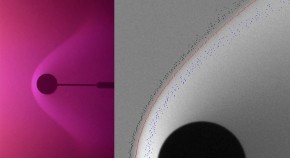
-
Localized time accurate sampling of nonequilibrium and unsteady hypersonic flows: methods and horizons
Authors
- Richard Miles
- Arthur Dogariu
- Laura Dogariu
- Content type: Research Article
- Open Access
- Published: 22 November 2021
- Article: 248
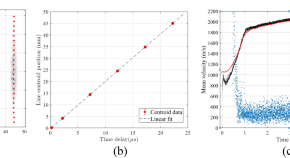
-
Shock interaction induced heat flux augmentation in hypersonic flows
Authors
- Ali Gülhan
- Sebastian Willems
- Dominik Neeb
- Content type: Research Article
- Open Access
- Published: 12 November 2021
- Article: 242

-
Duplication of hypersonic stagnation-region aerothermochemistry and gas-surface interaction in high-enthalpy ground testing
Authors (first, second and last of 4)
- Alessandro Turchi
- Juan J. Matesanz Saiz
- Olivier Chazot
- Content type: Research Article
- Published: 29 October 2021
- Article: 238

-
Development and commissioning of the T6 Stalker Tunnel
Authors (first, second and last of 11)
- Peter Collen
- Luke J. Doherty
- Matthew McGilvray
- Content type: Research Article
- Open Access
- Published: 10 October 2021
- Article: 225

-
Mack-mode instabilities on a cooled flared cone with discrete roughness elements at Mach 6
Authors (first, second and last of 4)
- Farhan Siddiqui
- Mark Gragston
- Rodney D. W. Bowersox
- Content type: Research Article
- Published: 30 September 2021
- Article: 213
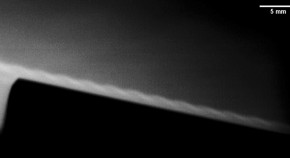
-
Effects of roughness on a turbulent boundary layer in hypersonic flow
Authors (first, second and last of 4)
- Owen J. H. Williams
- Dipankar Sahoo
- Alexander J. Smits
- Content type: Research Article
- Published: 03 September 2021
- Article: 195
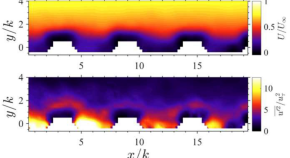
-
Aerodynamics of inclined cylindrical bodies free-flying in a hypersonic flowfield
Authors (first, second and last of 6)
- Patrick M. Seltner
- Sebastian Willems
- Michael J. Aftosmis
- Content type: Research Article
- Open Access
- Published: 13 August 2021
- Article: 182

-
Measurements and analysis of hypersonic tripped boundary layer turbulence
Authors (first, second and last of 5)
- Keill J. Hopkins
- Hadas Porat
- Ananthanarayanan Veeraragavan
- Content type: Research Article
- Published: 14 July 2021
- Article: 164

-
Experiments on the development of natural disturbances in a hypersonic boundary layer on surfaces with microgrooves
Authors
- S. V. Lukashevich
- S. O. Morozov
- A. N. Shiplyuk
- Content type: Research Article
- Published: 07 July 2021
- Article: 155

-
Aerodynamic characteristics of a free-flight scramjet vehicle in shock tunnel
Authors
- Marie Tanno
- Hideyuki Tanno
- Content type: Research Article
- Open Access
- Published: 03 July 2021
- Article: 150
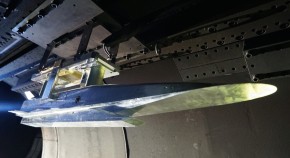
-
Effect of surface cooling on second-mode dominated hypersonic boundary layer transition
Authors (first, second and last of 9)
- Ryan Oddo
- Jonathan L. Hill
- Joseph S. Jewell
- Content type: Research Article
- Published: 25 June 2021
- Article: 144
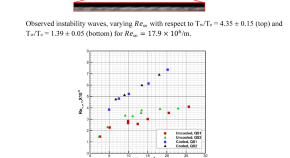
-
Characterization of radiative heating anomaly in high enthalpy shock tunnels
Authors (first, second and last of 5)
- Brett A. Cruden
- Chun Y. Tang
- Hideyuki Tanno
- Content type: Research Article
- Published: 22 June 2021
- Article: 142
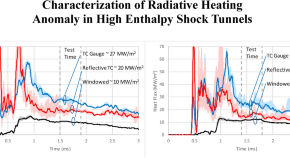
-
Interaction of second-mode wave packets with an axisymmetric expansion corner
Authors
- Cameron S. Butler
- Stuart J. Laurence
- Content type: Research Article
- Published: 16 June 2021
- Article: 140

-
Freestream velocity-profile measurement in a large-scale, high-enthalpy reflected-shock tunnel
Authors (first, second and last of 5)
- D. Shekhtman
- W. M. Yu
- J. M. Austin
- Content type: Research Article
- Published: 05 May 2021
- Article: 118

-
Global measurements of hypersonic shock-wave/boundary-layer interactions with pressure-sensitive paint
Authors
- Carson L. Running
- Thomas J. Juliano
- Content type: Research Article
- Published: 10 April 2021
- Article: 91
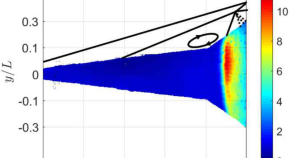
-
Detection of second-mode instabilities on a flared cone in Mach 6 quiet flow with linear array focused laser differential interferometry
Authors
- Mark Gragston
- Farhan Siddiqui
- John D. Schmisseur
- Content type: Research Article
- Published: 31 March 2021
- Article: 81

-
Experiments on the separation of sphere clusters in hypersonic flow
Authors
- Thomas J. Whalen
- Stuart J. Laurence
- Content type: Research Article
- Published: 19 March 2021
- Article: 70



